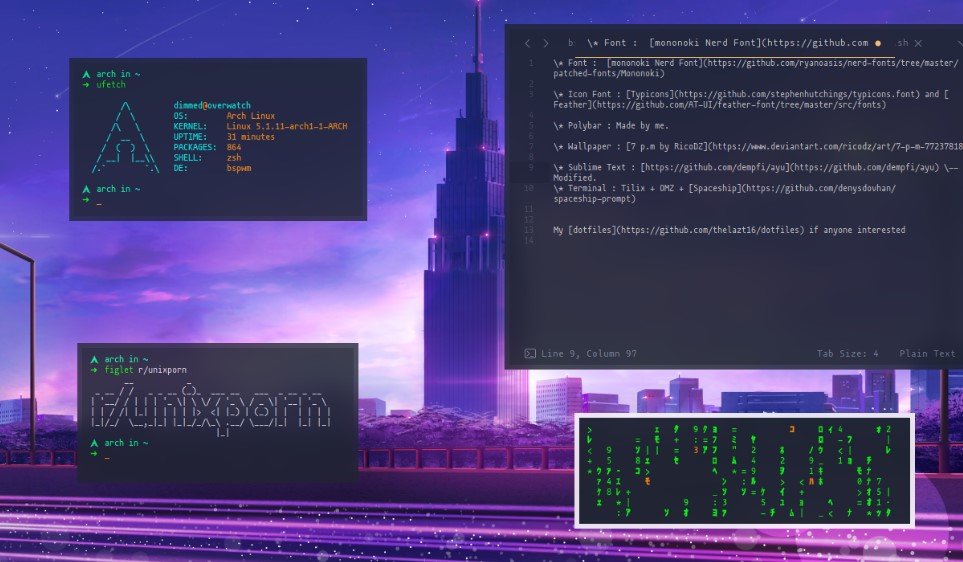It’s not for everyone — and maybe that’s exactly the point. While Linux often gets slammed for being complicated, fragmented, or downright “unfriendly,” it’s those very quirks that make it the ideal tool for folks who like full control and a bit of a challenge.
Sure, the learning curve can feel like hiking up a cliff barefoot. But for some of us, that’s exactly what makes it worth climbing.
Not a Preacher, Just a User Who Likes Options
Most Linux fans love to talk about open-source ethics, the joy of escaping corporate tracking, or ditching subscription models. That’s cool — I respect it. But I’m not here to sell you on ideology.
I use Linux because it works for what I need.
One day I’m spinning up containers for a server build, the next I’m tweaking my GPU drivers to eek out more gaming performance. It’s a toolbox, not a temple. I’ll use macOS or Windows when needed. But I reach for Linux when I want to get my hands dirty.
Sometimes it feels like Linux users fall into two camps: the zealots and the pragmatists. I’m firmly in the second group. If something’s broken, I want to understand why. If it can be customized, I’m in.

The Freedom to Choose (Even If It’s Overwhelming)
People say Linux has too many choices. And you know what? They’re absolutely right. There are hundreds of distributions. Some stable, some experimental. Some come with all the bells and whistles, some are barebones builds that boot to a terminal.
That’s not a bug. That’s the feature.
One weekend I might mess around with Arch-based systems like Bazzite or Nobara to test out gaming tweaks. Another time, I’ll grab Ubuntu because it’s easy to spin up for a cloud deployment or a lightweight VM. I can go from minimal to maximal without ever leaving the ecosystem.
Sure, choice paralysis is real. But once you find a distro you vibe with, the rest falls into place.
Here’s where choice becomes powerful:
-
You pick your desktop environment — want it to feel like Windows, macOS, or something totally new? Done.
-
Want to automate package installs with scripts? Easy.
-
Want total system control without any vendor locks? That’s standard here.
Terminal Life: Where the Real Magic Happens
Let’s be real — this is where most new users bounce.
The command line is scary until it isn’t. Once you get a handle on a few commands, the entire system starts to feel readable, even transparent. GUI apps hide stuff. Terminals teach.
And here’s the trick: almost all Linux distros share the same command line DNA. Sure, there are differences (apt vs pacman, systemd vs runit), but the fundamentals stay the same. You don’t have to relearn everything from scratch just because you switch flavors.
One sentence here for flavor.
The fact that Linux separates the desktop interface from the core system is huge. I can run KDE, GNOME, or a tiling window manager like i3 and still feel like I’m in my element.
Try That on Windows. Oh, You Can’t.
There’s a reason so many Linux users feel boxed in when forced back to commercial operating systems. Stuff that’s easy on Linux is either impossible or needlessly complex elsewhere.
This isn’t about saying Linux is “better.” But it is more open — and that matters when you want to build something your way.
It’s Not Perfect, But That’s the Fun
Here’s where I admit something obvious: Linux can be annoying.
You’ll hit weird bugs, especially if you’re on bleeding-edge distros like Arch. Drivers won’t always play nice. And when things break, you won’t have a 1-800 number to call. You are the support.
But that unpredictability? It teaches you stuff.
I’ve fixed bootloaders, recompiled kernels, written scripts to automate annoying workflows. Not because I wanted to at first — but because I had to. Now those skills are second nature.
And honestly, that’s what keeps me coming back. You own the problem. And the solution.
The Anti-Meta Operating System
Linux doesn’t chase trends. It doesn’t care about market share. It’s not built around focus groups or quarterly earnings. It just… exists. Built by people who like to build.
If that sounds frustrating, that’s fair.
But to me, it feels refreshing. I don’t need an OS that’s “smart” or predictive. I just want one that stays out of my way until I tell it what to do. Linux does that.
In a world where most systems try to guess what you want and sell you something along the way, it’s nice to work with one that just hands you the keys and says, “Go ahead. It’s all yours.”








